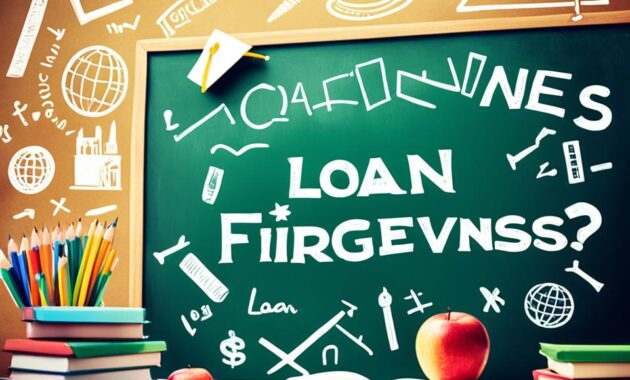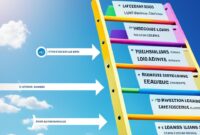In the United States, the burden of student loan debt has become a significant challenge for many individuals pursuing higher education. However, there are various student loan forgiveness programs available that can provide relief and potential debt cancellation. This article aims to provide a comprehensive guide to understanding these programs, their eligibility criteria, and the steps you can take to navigate the student loan forgiveness process.
Key Takeaways
- Student loan forgiveness programs offer relief for individuals with federal or private student loan debt.
- Eligibility criteria vary by program, including factors such as employment, income, and loan type.
- Exploring options like Public Service Loan Forgiveness, Income-Driven Repayment plans, and Borrower Defense to Repayment can help determine the best path forward.
- Beware of student loan forgiveness scams and carefully navigate the application process to avoid potential pitfalls.
- Understanding the tax implications of having your student loans forgiven is crucial for managing your finances effectively.
Understanding Student Loan Forgiveness Programs
The idea of loan forgiveness can significantly change the financial lives of borrowers. Yet, the process is intricate, with different programs for federal and private loans. It’s essential for borrowers to grasp the distinctions and eligibility for relief.
Federal vs. Private Student Loan Forgiveness
Federal loan forgiveness programs are overseen by the government, offering options like Public Service Loan Forgiveness (PSLF), income-driven repayment, and Borrower Defense to Repayment. These can lead to partial or full loan forgiveness based on the borrower’s situation.
On the other hand, private loan forgiveness is scarce and harder to secure. Private lenders don’t have to offer forgiveness, and the requirements are often stricter. Borrowers might look into consolidation, refinancing, or negotiating with lenders for relief.
Eligibility Criteria for Loan Forgiveness
- Federal loan forgiveness programs require specific conditions, such as working in public service, being on an income-driven plan, or showing financial hardship due to school misconduct.
- Private loan forgiveness is rare and available under certain conditions, like disability, borrower’s death, or school-related issues. Borrowers should check their loan agreements and contact lenders for details.
Understanding the complexities of loan forgiveness is daunting, but knowing the differences between federal and private options, along with the eligibility, can guide borrowers to the best solution for their financial needs.
| Federal Student Loan Forgiveness | Private Student Loan Forgiveness |
|---|---|
| Administered by the government | Offered by private lenders on a limited basis |
| Diverse options, such as PSLF, income-driven repayment plans, and Borrower Defense | Typically more difficult to obtain and with stricter eligibility criteria |
| Can provide partial or full forgiveness of federal student loans | May be available in limited circumstances, such as disability or school-related issues |
Federal Student Loan Forgiveness Options
There are several options for federal student loan forgiveness available to borrowers. These programs can cancel all or part of your federal student loan balance. This relief is crucial for many borrowers.
Income-driven repayment plans are a popular choice. They set your monthly payments based on your discretionary income. Plans like Income-Based Repayment (IBR) and Pay As You Earn (PAYE) can lead to federal loan cancellation after 20-25 years of payments.
The Public Service Loan Forgiveness (PSLF) initiative is another key program. It forgives the remaining loan balance if you work full-time for a qualifying employer and make 120 eligible payments.
The borrower defense to repayment provision is also available. It allows borrowers defrauded by their schools to apply for federal loan cancellation. This is crucial for those misled about their education program’s cost, quality, or job prospects.
It’s vital to review each federal student loan forgiveness option’s eligibility and application process. This will help you find the best fit for your situation. Understanding these programs can lead to significant relief from student debt.
| Federal Loan Forgiveness Option | Key Eligibility Criteria | Potential Forgiveness Amount |
|---|---|---|
| Income-Driven Repayment Plans |
|
Remaining balance after 20-25 years of payments |
| Public Service Loan Forgiveness (PSLF) |
|
Remaining balance after 120 qualifying payments |
| Borrower Defense to Repayment |
|
Full balance of federal student loans |
“Navigating the various federal student loan forgiveness options can be complex, but the potential benefits make it worthwhile for eligible borrowers to explore these programs.”
Public Service Loan Forgiveness (PSLF)
If you’re a public service worker with federal student loans, the Public Service Loan Forgiveness (PSLF) program could be your ticket to debt relief. This program allows eligible borrowers to have their public service loan forgiveness after making 120 qualifying monthly payments. Yet, the PSLF application process is intricate, so grasping the PSLF eligibility criteria and application requirements is crucial.
Requirements for PSLF Eligibility
To be eligible for PSLF, you must work full-time for a government or non-profit, hold federal Direct Loans, and be in an income-driven repayment plan. You also need to make 120 on-time, qualifying payments while in public service. Eligible employers span federal, state, local, or tribal government agencies, and 501(c)(3) non-profit organizations.
Applying for PSLF and Loan Forgiveness
The PSLF application process is multi-step. Initially, you must submit the PSLF Employment Certification Form annually to confirm your employment and payment history. After 120 qualifying payments, you can apply for PSLF by filling out the PSLF application form and sending it to the U.S. Department of Education. It’s vital to meticulously review the documentation requirements and deadlines for a successful application.
While the PSLF program presents challenges, its potential benefits are substantial. By comprehending the eligibility criteria and adhering to the application procedures, public service workers can leverage this student loan forgiveness opportunity.
Income-Driven Repayment Plans
Income-driven repayment plans can significantly alter how you manage federal student loans. These plans adjust your monthly payments based on your income and family size. This makes them a viable option for borrowers finding it hard to sustain their debt payments.
Overview of Income-Based Repayment Plans
Income-Based Repayment (IBR), Income-Contingent Repayment (ICR), and Pay As You Earn (PAYE) are the primary income-driven repayment plans. Each has specific eligibility requirements and repayment terms. Yet, they all strive to ease the burden of loan payments by capping the monthly amount at a percentage of your discretionary income.
One of the standout features of these plans is the potential for federal student loan forgiveness after 20-25 years of consistent payments. This can be a beacon of hope for borrowers who’ve battled to pay off their loans over the years.
| Repayment Plan | Payment Cap | Forgiveness Timeframe |
|---|---|---|
| Income-Based Repayment (IBR) | 10-15% of discretionary income | 25 years |
| Income-Contingent Repayment (ICR) | 20% of discretionary income | 25 years |
| Pay As You Earn (PAYE) | 10% of discretionary income | 20 years |
When selecting an income-driven repayment plan, it’s crucial to weigh factors like your total loan balance, current and future income, and your financial goals. By choosing the right plan, borrowers can potentially save a lot and move closer to federal student loan forgiveness.
Borrower Defense to Repayment
If you’ve faced misconduct or misrepresentation from your educational institution, you might qualify for loan forgiveness through the Borrower Defense to Repayment program. This federal student loan forgiveness option is designed for borrowers who’ve been harmed by their schools.
The program allows borrowers to have their loans forgiven if their school engaged in illegal, fraudulent, or abusive practices. This includes situations where schools misrepresented the cost, quality, or job prospects of their programs.
To be eligible for Borrower Defense to Repayment, you must prove that your school’s actions meet the legal standards set by the U.S. Department of Education. This process can be intricate, but there are resources to assist borrowers with loan discharge options and federal student loan forgiveness applications.
If your claim is approved, the government will discharge your eligible federal student loans, effectively wiping out your debt. This can offer substantial financial relief to those misled or defrauded by their educational institutions.
Despite recent challenges, the Borrower Defense to Repayment program remains a crucial borrower defense to repayment option for those harmed by their schools. By understanding your rights and the eligibility criteria, you can move towards the federal student loan forgiveness you are owed.
Teacher Loan Forgiveness Program

For educators committed to their communities, the Teacher Loan Forgiveness Program offers hope in managing student debt. This federal program forgives up to $17,500 for teachers who teach in low-income schools or agencies for five years. It’s a significant relief for those dedicated to education.
To qualify, teachers need a bachelor’s degree and a teaching certificate. They must also teach full-time in a high-need subject like math, science, or special education. The school must serve a predominantly low-income student body.
- Eligible teachers can receive up to $17,500 in federal student loan forgiveness.
- Applicants must teach full-time for five consecutive years in a low-income school or agency.
- Teachers must hold a bachelor’s degree and a valid teaching certificate in their subject area.
- The school or agency must be designated as low-income with a high poverty rate among students.
The Teacher Loan Forgiveness Program is crucial for educators who aim to make a difference. It eases the financial strain of student loans, allowing teachers to focus on their students. This teacher loan forgiveness opportunity is a boon for those passionate about education.
“The Teacher Loan Forgiveness Program has been a game-changer for me. It’s allowed me to focus on my students and their education, without worrying about the financial strain of my own student loans.”
For those seeking federal student loan forgiveness and education finance assistance, this program is a key resource. By understanding its requirements and process, educators can seize this opportunity. It enables them to continue their crucial work in education.
Student Loan Forgiveness for Specific Professions
There are various student loan forgiveness programs tailored for certain career fields. These debt relief programs offer significant federal loan cancellation and education finance assistance. They help alleviate the heavy load of student debt for eligible individuals.
The Public Service Loan Forgiveness (PSLF) program stands out, forgiving federal student loans for those in public service jobs. This includes roles in government, the military, and nonprofit sectors. To qualify, borrowers must make 120 qualifying payments while working full-time in an eligible position.
The Perkins Loan Cancellation program is another avenue for forgiveness. It targets specific professions like teaching, nursing, law enforcement, and public defense. Borrowers can have a part of their Perkins Loans forgiven each year they serve in these fields.
For those in the military, there are student loan repayment assistance programs available. These include the Army and Navy Loan Repayment Programs. They help cover the costs of federal student loans for active-duty personnel and veterans.
| Profession-Specific Loan Forgiveness Programs | Eligibility Criteria | Potential Forgiveness Amount |
|---|---|---|
| Public Service Loan Forgiveness (PSLF) | Full-time employment in a qualifying public service job, 120 monthly payments | Remaining balance on eligible federal student loans |
| Perkins Loan Cancellation | Employment in specific professions, such as teaching, nursing, or public defense | Portion of Perkins Loans forgiven for each year of service |
| Military Student Loan Repayment Assistance | Active-duty service in the U.S. Armed Forces | Varies based on program and length of service |
These student loan forgiveness options offer significant relief for borrowers in specific fields. By understanding the eligibility and potential benefits, individuals can find the best debt relief programs for their situation.
Navigating the Student Loan Forgiveness Process
Applying for student loan forgiveness is a detailed process, but with the right strategy, borrowers can overcome the hurdles and achieve relief. The key to success is grasping the documentation and application needs for each program.
Documentation and Application Requirements
To kick off the student loan forgiveness process, borrowers must collect and organize essential documents. These include:
- Proof of employment, such as pay stubs or employment verification letters
- Income documentation, including tax returns or pay statements
- Details about the borrower’s student loans, including loan statements and balances
- Proof of enrollment in an income-driven repayment plan, if applicable
After preparing the documentation, borrowers can move on to the application stage. This might mean filling out forms, applying online, or interacting with their loan servicer. It’s vital to adhere to the program’s instructions and meet deadlines for a successful application.
| Forgiveness Program | Key Application Requirements |
|---|---|
| Public Service Loan Forgiveness (PSLF) |
|
| Teacher Loan Forgiveness |
|
By staying organized, meeting deadlines, and adhering to each program’s guidelines, borrowers can boost their chances of successfully navigating the student loan forgiveness process. This approach can lead to the relief they need.
Student Loan Forgiveness Scams and Pitfalls
When you’re dealing with student loan forgiveness, it’s vital to know about scams and pitfalls that could throw off your plans. Fraudsters might promise quick or sure loan discharge, but these offers are usually too enticing to be real. Such scams can end up costing you more, with extra fees and harm to your credit score.
To dodge these traps, stick to legitimate, government-backed programs and trusted financial institutions. Always do your homework on any group or person before sharing your loan details or making payments. Be wary of any firm asking for upfront fees or promising instant loan forgiveness, as these are red flags for scams.
Moreover, beware of other potential pitfalls in student loan forgiveness. The application process can be intricate, and a minor error could affect your eligibility. Make sure you fully grasp the criteria for each forgiveness program and keep detailed records of your efforts. For accurate advice, turn to trusted sources like the U.S. Department of Education or non-profit financial counseling agencies. This will help protect your rights and boost your chances of success.







